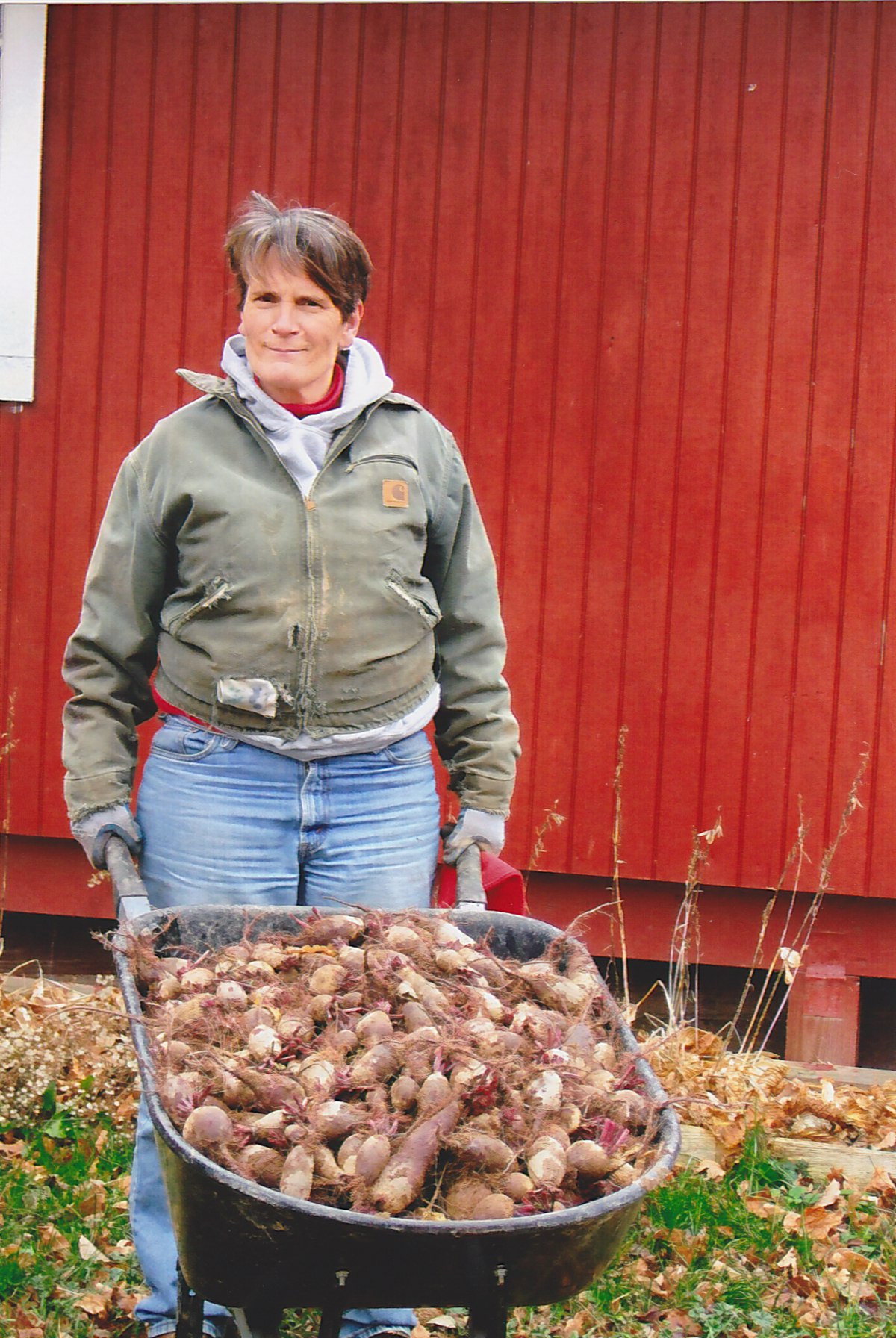Small Farms, Local Food Getting Some Hot New Technology
Jane Bush of Charlotte, MI, is one of those smaller farmers with a diverse mix of products for a broad range of local customers. The latest venture for her Apple Schram Organic Orchard is sales of early tomatoes and extended season greens to hospitals in Jackson, Ann Arbor and Lansing, Michigan, as part of the new Four Seasons Cooperative.
Like many smaller diversified farmers, Bush has had to patch together processing, distribution, marketing, and even record-keeping solutions. Most of the more sophisticated services out there, that might handle the complexity of multi-product and multi-market farmers, are designed for much bigger operations.
“Everybody wants to promote smaller farmers, but there hasn’t been a whole lot on the back end for those farmers,” she said.

The field of small farm business services is growing for Jane Bush’s Apple Schram Organic Orchard in Charlotte and many other diversified operations focused on local markets.
In a sign of changing times, however, the field of business products and services available to the local food set is now popping with entrepreneurs and innovations. This new business-to-business lineup is also leveraging the power of social networks, mobile phones and other vehicles to leap frog over so many conventional food market barriers and establish an entirely new playing field.
Starting on the farm production end of the marketing chain, a leading example is AgSquared, a software package that helps diversified farms plan, manage and monitor everything that happens from ordering seed to heading out the farm gate. The company just launched last December and was already up to 2,000 users at the end of February. AgSquared is offering discounts to early subscribers off a regular price of $60 per year.
David Baker, owner of Primrose Valley Farm CSA in south-central Wisconsin, calls it a “killer app.” He said he and wife Jamie are happy to have AgSquared in their toolbox as they scale up from several hundred to 2,000 CSA subscribers.
“Like thousand of farms like ours, our seasonal planning and execution has been held captive by numerous complex spreadsheets that are inefficient at best and not readily capable of accommodating the many twists and turns that are part of our daily farm experience,” Baker said.
Moving on to services for marketing products and conducting sales, a leading example is the online marketplace Local Orbit. Many online sites exist for marketing and selling local food. Local Orbit stands out because it allows farms to sell in multiple marketplaces from one account. It also supports farms with a built-in suite of back-end tools for marketing products, tracking customers, updating and monitoring inventory, and organizing delivery.
Developed and tested over the last couple years, Local Orbit is taking off with regional groups trying to streamline and support the flow of local food from many sellers to many buyers. Local Orbit is working with Detroit Eastern Market and the Puget Sound Food Network, and launching new sites this spring in Albuquerque, Baltimore and Colorado.
Christine Quane, wholesale manager at Detroit Eastern Market, is using it to simplify and step up sales from local growers to area buyers, like Detroit Public Schools. “Local Orbit provides the information I need to minimize logistics costs in the supply chain,” Quane said.
Further down the line of new business services, another set is focused on making the food supply chain more transparent. Leaders range from Top Ten Produce and its mobile bar code branding of food from smaller farms to Real Time Farms and Food Tree, which are resources for consumers searching for local food.
A supporting tool that some are using is Sourcemap, which employs social networking to make supply chains more transparent.
“We’re like the YouTube of supply chains,” said CEO Leo Bonanni. Anybody can map their business for free and build maps by linking with others, such as restaurants that are building maps of their local food sources.
“Users can basically ‘friend’ each other and add that information to their supply chain maps,” Bonanni said.
Food and farming is Sourcemap’s largest user group so far, he added. “Out of 2,000 maps, about 1,000 are food related.” Sourcemap is also working with retailers and other larger companies to map and market their supply chains.
The most compelling thing about this emerging field of local food and small farm technology support is the potential game-changing interconnectivity of it.
As Cara and Karl Rosaen, founders of Ann Arbor-based Real Time Farms, explained in a Dec. 21, 2011 article at Food+Tech Connect, the online magazine watching this new world: “If we work together … we can move, aggregate, and share data seamlessly between farm management systems (like AgSquared), CSA-management systems (like LocalHarvest’s CSAware), traceability software (such as HarvestMark and Top10Produce), food hub distribution software (such as LocalOrb.it), online food distribution systems (like LocalDirt or Farmigo) and consumer facing educational tools, like Food Tree and RealTimeFarms.”
Turn Up the Volume is a Fair Food Network project to investigate local food market potential for Michigan growers, processors, and distributors. Patty Cantrell, Regional Food Solutions LLC, produces the series for the Fair Food Network with USDA Specialty Crop Block Grant support. This article was originally printed in Vegetable Grower News.







